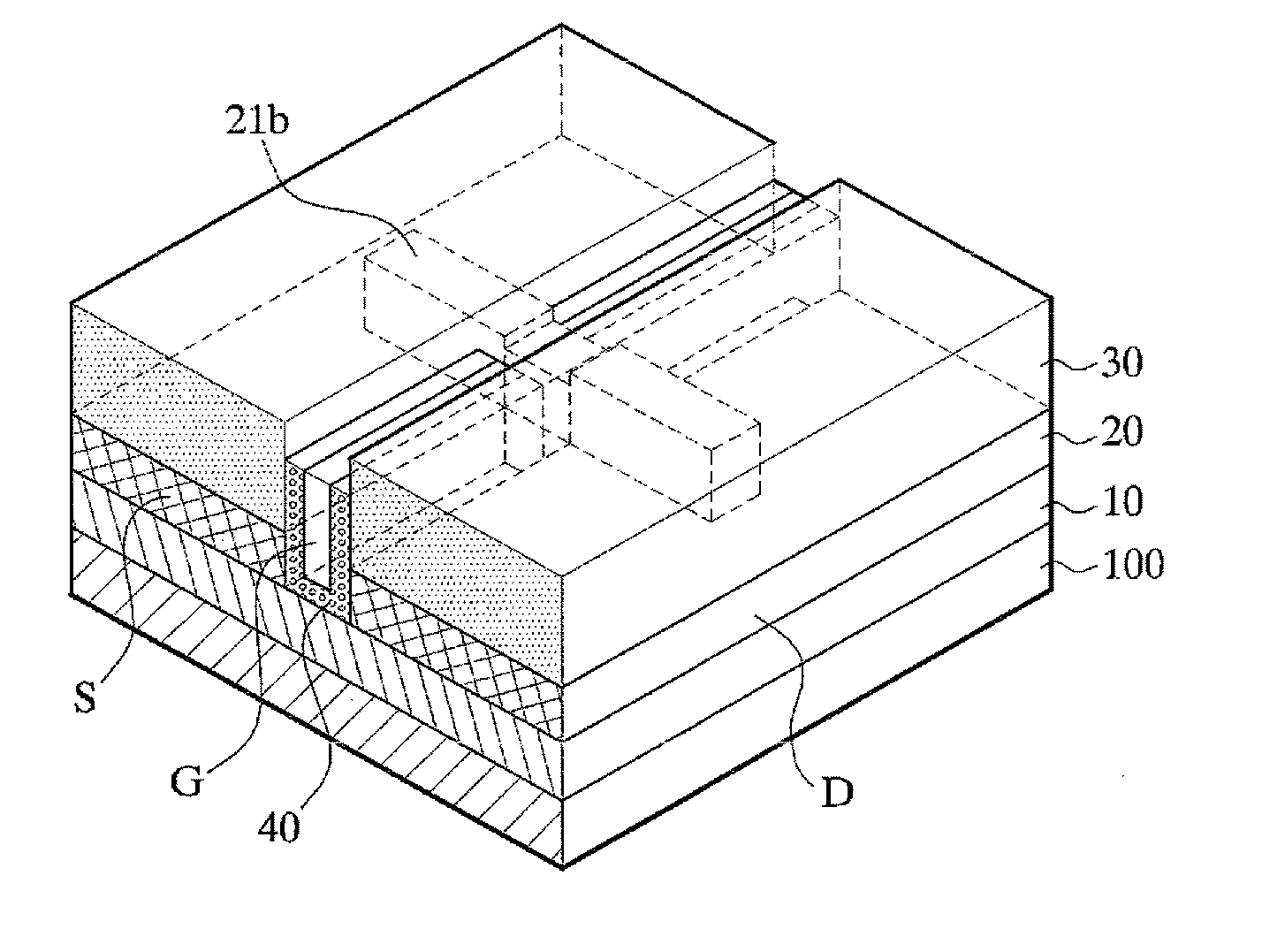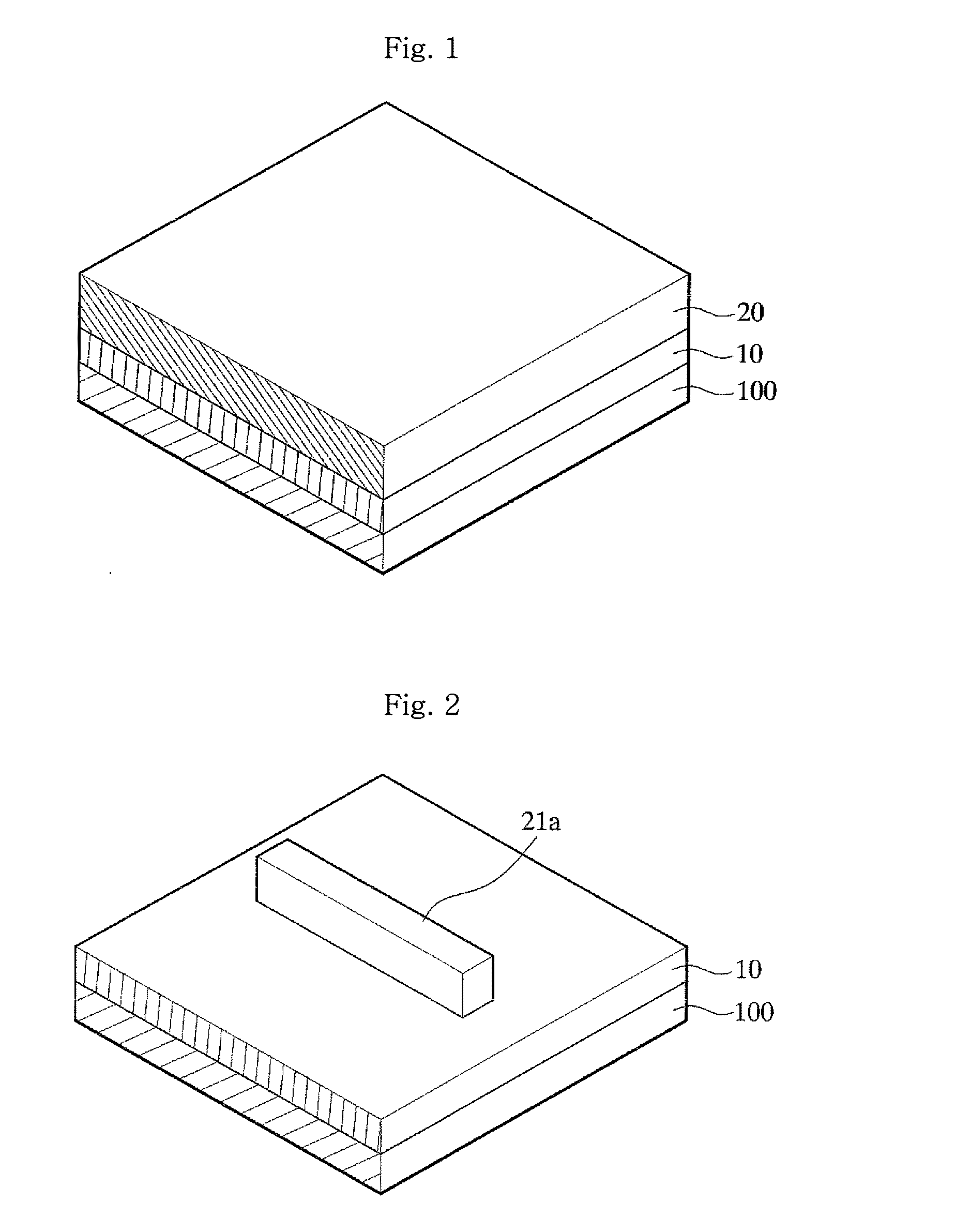Single Electron Transistor Operating at Room Temperature and Manufacturing Method for Same
a single-electron transistor and room temperature technology, applied in the field of single-electron transistors, can solve the problems of difficult to improve the operating temperature of the device, difficult to intentionally control the height and width of the tunneling barrier, and the scale-down process of the semiconductor device resulting from the development of technology inevitably encounters a physical limit, so as to minimize the influence of the gate voltage on the tunneling barrier and effectively control only the electric potential
- Summary
- Abstract
- Description
- Claims
- Application Information
AI Technical Summary
Benefits of technology
Problems solved by technology
Method used
Image
Examples
first embodiment
of the Present Invention
[0056]FIG. 2 is a partially sectional perspective view showing a state in which a nano-wire structure 21a according to a first embodiment of the present invention is formed. A first step is a step of forming the nano-wire structure 21a over the SOI substrate. The nano-wire structure 21a is formed by etching the top silicon layer 20. To this end, a resist is coated on the top silicon layer 20, a pattern is formed using a photolithography process or an electron-beam lithography process, and the top silicon layer 20 is etched using the formed pattern as a mask. The formed nano-wire structure can preferably have a width of 1 to 50 nm and a length of 1 to 1000 nm such that the total size of the transistor can be minimized.
[0057]FIG. 3 is a partially sectional perspective view showing a state in which a second insulation film 30 is formed according to the first embodiment of the present invention. A second step is a step of forming the second insulation film 30 ove...
second embodiment
of the Present Invention
[0067]A first step according to the second embodiment of the present invention is a step of forming a nano-wire structure 21a. The first step of forming the nano-wire structure 21a preferably is identical with the first step of the first embodiment.
[0068]A second step according to the second embodiment of the present invention is a step of forming a second insulation film 30. The second step of forming the second insulation film 30 preferably is identical with the second step of the first embodiment.
[0069]A third step according to the second embodiment of the present invention is a step of forming a quantum dot 212. The third step of forming the quantum dot 212 preferably is identical with the third step of the first embodiment.
[0070]FIG. 17 is a partially sectional perspective view showing a state in which a metal film 50 is formed according to the second embodiment of the present invention. As shown in FIG. 17, a fourth step is a step of forming the metal f...
third embodiment
of the Present Invention
[0076]FIG. 22 is a cross-sectional perspective view showing a state in which a nano-wire structure 21b is formed according to a third embodiment of the present invention. A first step is a step of forming the nano-wire structure 21b. The nano-wire structure 21b is formed on a top silicon layer 20. In particular, the nano-wire structure 21b is formed by coating a resist on the top silicon layer 20, forming a pattern using a photolithography process or an electron-beam lithography process, and then etching the remaining portions other than the formed pattern. In a typical method, the nano-wire structure 21b is formed by depositing insulating material, forming a pattern using a lithography process, and then performing etching. In particular, the insulating material can include silicon oxide or silicon nitride. The nano-wire structure 21b is made of the insulating material.
[0077]FIG. 23 is a cross-sectional perspective view showing an example in which impurities ...
PUM
 Login to View More
Login to View More Abstract
Description
Claims
Application Information
 Login to View More
Login to View More - R&D
- Intellectual Property
- Life Sciences
- Materials
- Tech Scout
- Unparalleled Data Quality
- Higher Quality Content
- 60% Fewer Hallucinations
Browse by: Latest US Patents, China's latest patents, Technical Efficacy Thesaurus, Application Domain, Technology Topic, Popular Technical Reports.
© 2025 PatSnap. All rights reserved.Legal|Privacy policy|Modern Slavery Act Transparency Statement|Sitemap|About US| Contact US: help@patsnap.com



